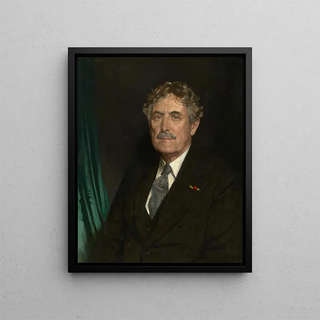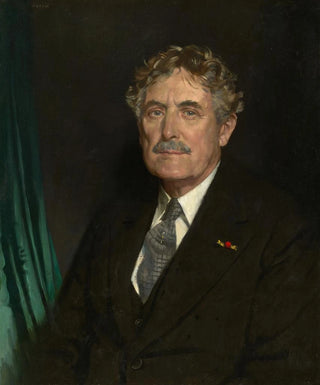Art print | Myron Timothy Herrick - William Orpen


View from behind

Frame (optional)
In the vast landscape of art history, certain works emerge as witnesses to a particular era, capturing the essence of a culture while transcending time. The art print Myron Timothy Herrick - William Orpen fits within this tradition, offering a fascinating glimpse into the finesse and complexity of early 20th-century figurative art. This piece, which evokes both emotional sensitivity and technical virtuosity, invites the viewer to immerse themselves in a universe where every detail carries meaning. Contemplating this work, one feels a deep connection to universal themes of identity, memory, and humanity.
Style and uniqueness of the work
Myron Timothy Herrick's style is distinguished by an approach that is both realistic and expressive. In this piece, the artist manages to marry meticulous precision with an atmosphere charged with emotion. The colors, subtly nuanced, create a visual harmony that captures the eye and the mind. Every brushstroke seems to tell a story; each shadow and light plays a role in the visual narration. This ability to evoke deep feelings through pictorial elements demonstrates Herrick's skill in manipulating the codes of his time, while infusing his own artistic vision. The composition, carefully orchestrated, guides the viewer's gaze through an immersive experience, where one faces the emotions of the depicted characters.
The artist and his influence
William Orpen, an emblematic figure of British art, is known for his exceptional talent in portraiture and his ability to capture the human soul. His influence on Myron Timothy Herrick is undeniable, as he inspired a generation of artists to explore the depths of human emotion through their work. Orpen, through his commitment to authentic representation and his exploration of social and political themes, paved the way for a deeper reflection on art and its role in society. The relationship between these two artists, both mentor and disciple, creates a fascinating dialogue on the evolution of art in the 20th century. Herrick, by integrating Orpen's lessons while developing his own voice,

Matte finish

View from behind

Frame (optional)
In the vast landscape of art history, certain works emerge as witnesses to a particular era, capturing the essence of a culture while transcending time. The art print Myron Timothy Herrick - William Orpen fits within this tradition, offering a fascinating glimpse into the finesse and complexity of early 20th-century figurative art. This piece, which evokes both emotional sensitivity and technical virtuosity, invites the viewer to immerse themselves in a universe where every detail carries meaning. Contemplating this work, one feels a deep connection to universal themes of identity, memory, and humanity.
Style and uniqueness of the work
Myron Timothy Herrick's style is distinguished by an approach that is both realistic and expressive. In this piece, the artist manages to marry meticulous precision with an atmosphere charged with emotion. The colors, subtly nuanced, create a visual harmony that captures the eye and the mind. Every brushstroke seems to tell a story; each shadow and light plays a role in the visual narration. This ability to evoke deep feelings through pictorial elements demonstrates Herrick's skill in manipulating the codes of his time, while infusing his own artistic vision. The composition, carefully orchestrated, guides the viewer's gaze through an immersive experience, where one faces the emotions of the depicted characters.
The artist and his influence
William Orpen, an emblematic figure of British art, is known for his exceptional talent in portraiture and his ability to capture the human soul. His influence on Myron Timothy Herrick is undeniable, as he inspired a generation of artists to explore the depths of human emotion through their work. Orpen, through his commitment to authentic representation and his exploration of social and political themes, paved the way for a deeper reflection on art and its role in society. The relationship between these two artists, both mentor and disciple, creates a fascinating dialogue on the evolution of art in the 20th century. Herrick, by integrating Orpen's lessons while developing his own voice,






